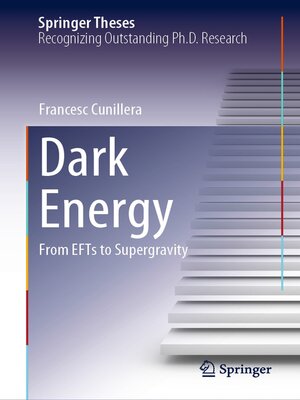
Sign up to save your library
With an OverDrive account, you can save your favorite libraries for at-a-glance information about availability. Find out more about OverDrive accounts.
Find this title in Libby, the library reading app by OverDrive.



Search for a digital library with this title
Title found at these libraries:
| Library Name | Distance |
|---|---|
| Loading... |
This book addresses supergravity and supergravity-motivated effective field theories in the context of cosmological model building. Extracting information about quintessence from string theory has attracted much attention in the past few years. The question became more urgent very recently after the possibility of obtaining de Sitter space was called into question. Therefore, there is an interesting debate as to whether de Sitter space or, even, quintessence can be derived from a fundamental theory, string theory or otherwise. This is a very active field of research, and the topics covered in the book render this work very timely.
Throughout the book, special care has been taken in demonstrating historical relevance of the field and describing the set of open questions motivating the state-of-the-art research. The first few chapters in each part provide a detailed review of standard perturbative and non-perturbative techniques in supergravity model building, as a way to prepare the reader for the more technical and original subsequent chapters. These early chapters also represent a self-contained review that would be useful for anyone planning to enter this challenging area of study. The subsequent chapters detail research in supergravity-motivated effective field theories, in the first part, and supergravity models, in the second part.
One of the important conclusions in this book is that modelling quintessence in perturbative string theory is at least as challenging as modelling de Sitter, placing the wider programme on a collision course with observations.
Throughout the book, special care has been taken in demonstrating historical relevance of the field and describing the set of open questions motivating the state-of-the-art research. The first few chapters in each part provide a detailed review of standard perturbative and non-perturbative techniques in supergravity model building, as a way to prepare the reader for the more technical and original subsequent chapters. These early chapters also represent a self-contained review that would be useful for anyone planning to enter this challenging area of study. The subsequent chapters detail research in supergravity-motivated effective field theories, in the first part, and supergravity models, in the second part.
One of the important conclusions in this book is that modelling quintessence in perturbative string theory is at least as challenging as modelling de Sitter, placing the wider programme on a collision course with observations.







